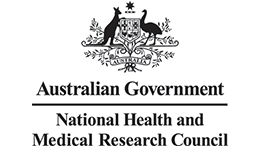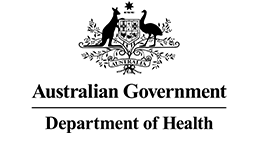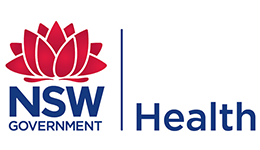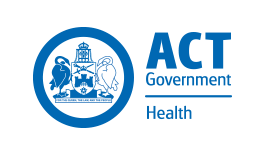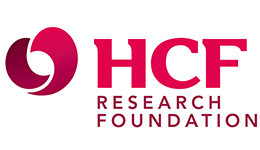Shedding light on how health policies are implemented

Status completed
Start Date
End Date
About
Policy and program implementation and the role of context in explaining prevention effectiveness
Project titleWhat is the issue?
Policies and programs that can help prevent chronic disease sometimes fall short of success because they are not fully implemented or don’t reach the right people. Electronic methods for implementation monitoring and performance assessment are becoming more widely used. But do they tell the whole story? Can they explain why it is harder to achieve optimal implementation in some places but not in others?
This project explored some state-of-the-art electronic methods for collecting data about health prevention policy and program distribution; and to examine and quantify the extent to which resources and organisational capacity contribute to implementing policies and achieving targets. We aim to collate practitioner insights for ongoing practice and e-monitoring improvement.
How did the project address the issue?
The project team established a collaborative partnership with NSW Health to identify examples of monitoring systems that can help answer the following questions:
- How are policies and programs reflected in the e-monitoring of health promotion?
- What are the current best practices?
- What variation in policy and program implementation is captured across different geographic areas and contexts?
- How is policy and program “dose” or intensity defined and measured?
- What parts of the implementation and health promotion practice story are we possibly missing in current electronic monitoring systems? How can these stories be uncovered and brought to light?
The team used qualitative methods (ethnography and interviews) and quantitative methods (social network analysis) to identify and quantify factors across different regional contexts that explain experience and variation in the implementation of programs of policies.
Our case study centred around the Population Health Information and Management System (PHIMS). This IT system enables NSW Health to set up, manage and report against the aims of the Healthy Children Initiative, which targets early childcare and primary schools in NSW to promote healthy eating and physical activity.
In addition to working with the health sector, the team wanted to identify examples from other sectors – such as education, justice and community services – that could help inform best practices for health policy and practice monitoring and implementation.
Relevance for practice
The project provided insights to enhance the scope and sensitivity of methods used to track policy and program distribution, thereby making the tracking systems (for accountability) more accurate and useful. It will increase the likelihood that prevention will be more effective and sustained by making practice more visible and supported.
What were the outcomes?
The data gathered during this project are informing the development of electronic program monitoring systems in NSW and are expected to lead to improvements to the system.
For more information on this project, please visit our external website.
News and media
-
Thought experiments with ‘fake’ research abstracts help policy makers visualise actions to be taken on evidence
News Category: Prevention Centre NewsDate -
Knowledge generated from practice shows how to bring about system change for better health
News Category: Prevention Centre NewsDate -
Social network tool provides insights into communities
News Category: Prevention Centre NewsDate -
Studying how IT monitoring affects prevention delivery in NSW
News Category: Prevention Centre NewsDate
Resources
-
Scaling-up complex interventions: Adaptation is not a threat to fidelity (and maybe never was)
Resource category:Videos
Date -
Panel discussion on researchers and decision-makers partnering to prevent chronic disease
Resource category:Videos
Date
Publications
Other publications
Presentations
- Loblay, V, Conte, KP, Groen, S, Green, A, Milat, A, Persson, L, Innes-Hughes, C, Mitchell, J, Thackway, S, Williams, M, Hawe, P. Data trails and documentation in Health Promotion services: sharing and storing practices in a professional context. Public Health Prevention Conference, Sydney, Australia, 2018.
- Conte, KP, Groen, S, Loblay, V, Green, A, Milat, A, Persson, L, Innes-Hughes, C, Mitchell, J, Thackway, S, Williams, M, Hawe, P. Challenging ‘pipeline’ translational models: quilting evidence in the largest-ever Australian childhood-obesity-prevention program. Public Health Prevention Conference, Sydney, Australia, 2018.
- Shahid, A, Conte, KP, Groen, S, Loblay, V, Green, A, Milat, A, Persson, L, Innes-Hughes, C, Mitchell, J, Thackway, S, Williams, M, Hawe, P. Informal knowledge management systems: a unique ethnography to help policy makers ‘listen close’ to public health practitioners monitoring their practice” Fuse International Conference on Knowledge Exchange in Public Health, Vancouver, Canada, 2018.
- Goldberg, E, Conte, KP, Groen, S, Loblay, V, Green, A, Milat, A, Persson, L, Innes-Hughes, C, Mitchell, J, Thackway, S, Williams, M, Hawe, P. How electronic monitoring of program implementation becomes embedded in health promotion practice. Public Health Prevention Conference, Sydney, Australia, 2018.
- Loblay V. Co-production and consensus: doing ethnography in a collaborative research partnership. Society for the Social Studies of Science. Sydney 29 August-1 September 2018
- Hawe P. What types of evidence are useful to understand interventions in complex systems. Global Evidence and Implementation Summit. Melbourne 22-24 October 2018
- Lobley, V. Resources and relationships: The complex role of resources in the implementation of childhood obesity interventions. Emerging Health Policy Research Conference; 27 July 2017, Sydney.
- Groen, S. When can we tick the box? The story behind achieving the hardest KPI in a health promotion program. Emerging Health Policy Research Conference; 27 July 2017, Sydney.
- Conte, KP, Gwynn, J, Turner, N, Koller, C, Gilham, K. Engaging local Aboriginal lay leaders to deliver health promotion programs to remote and rural communities. Poche Centre for Indigenous Health Research Showcase; 28 July 2016, Sydney.
- Conte, KP, Hawe, P. What’s measured and what’s not: dynamics of program implementation monitoring. Emerging Health Policy Research Conference; 13 July 2016, Sydney.
- Rowbotham, S. Conte, KP, Hawe, P. Operationalising ‘dose’ in public health interventions: A scoping review. Emerging Health Policy Research Conference; 13 July 2016, Sydney.
Newsletters
People
Lead investigators
Project team
-
Dr Dan Chamberlain Dr Dan Chamberlain has finished working with the Prevention Centre.
La Trobe University -
Dr Katie Conte Dr Katie Conte has finished working with the Prevention Centre.
University of Sydney -
Dr Sisse Groen Dr Sisse Groen has finished working with the Prevention Centre.
Menzies Centre for Health Policy, University of Sydney -
Christine Innes-Hughes Christine Innes-Hughes has finished working with the Prevention Centre.
NSW Office of Preventive Health -
Dr Victoria Loblay
The University of Sydney -
Amanda Lockeridge Amanda Lockeridge has finished working with the Prevention Centre.
NSW Office of Preventive Health -
Leah Marks
The University of Sydney -
Professor Andrew Milat
The University of Sydney -
Adjunct Associate Professor Jo Mitchell Adjunct Associate Professor Jo Mitchell has finished working with the Prevention Centre.
The Australian Prevention Partnership Centre -
Lina Persson Lina Persson has finished working with the Prevention Centre.
Centre for Epidemiology and Evidence, NSW Ministry of Health -
Dr Samantha Rowbotham
The University of Sydney -
Associate Professor Sarah Thackway
NSW Health














